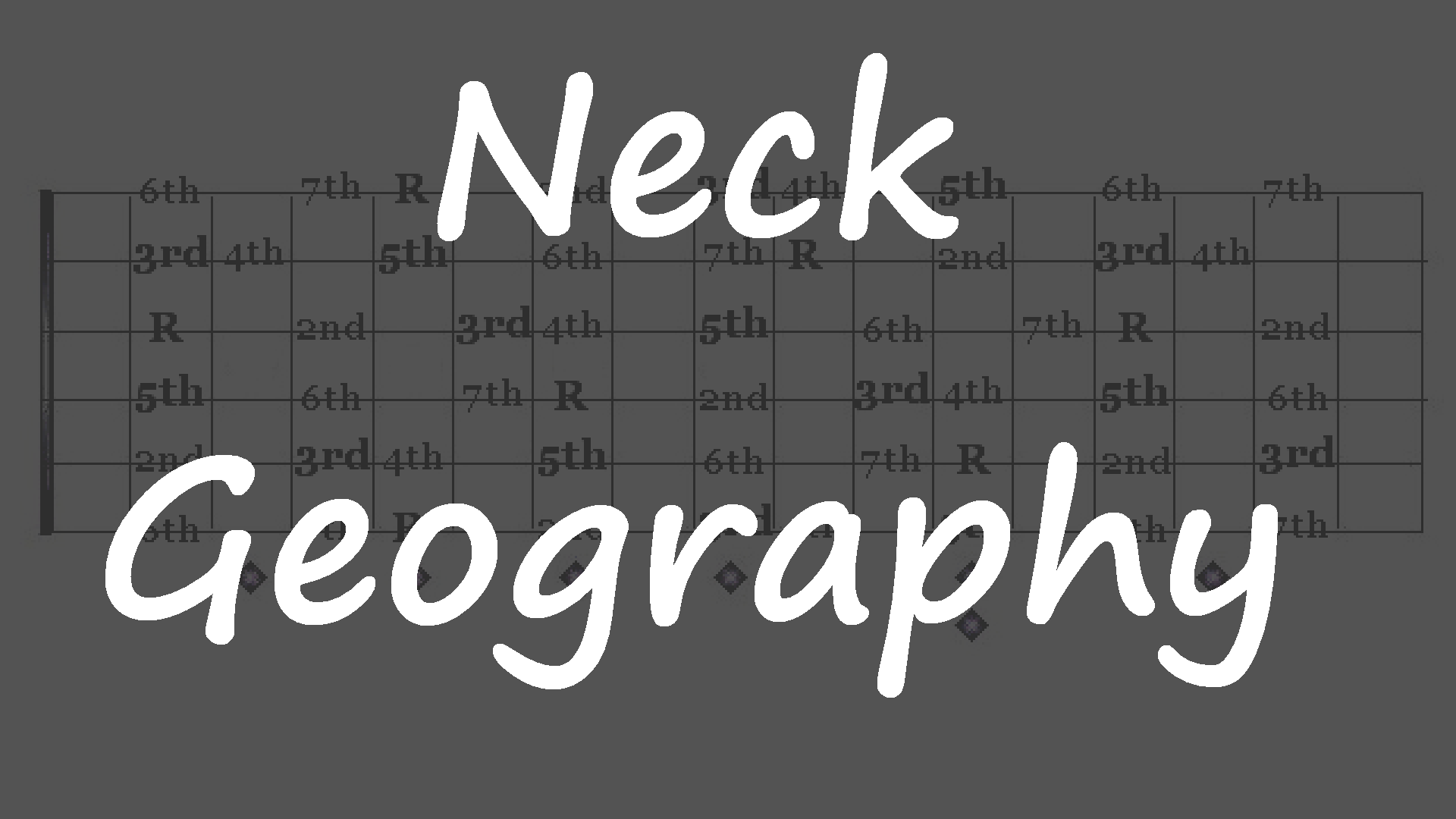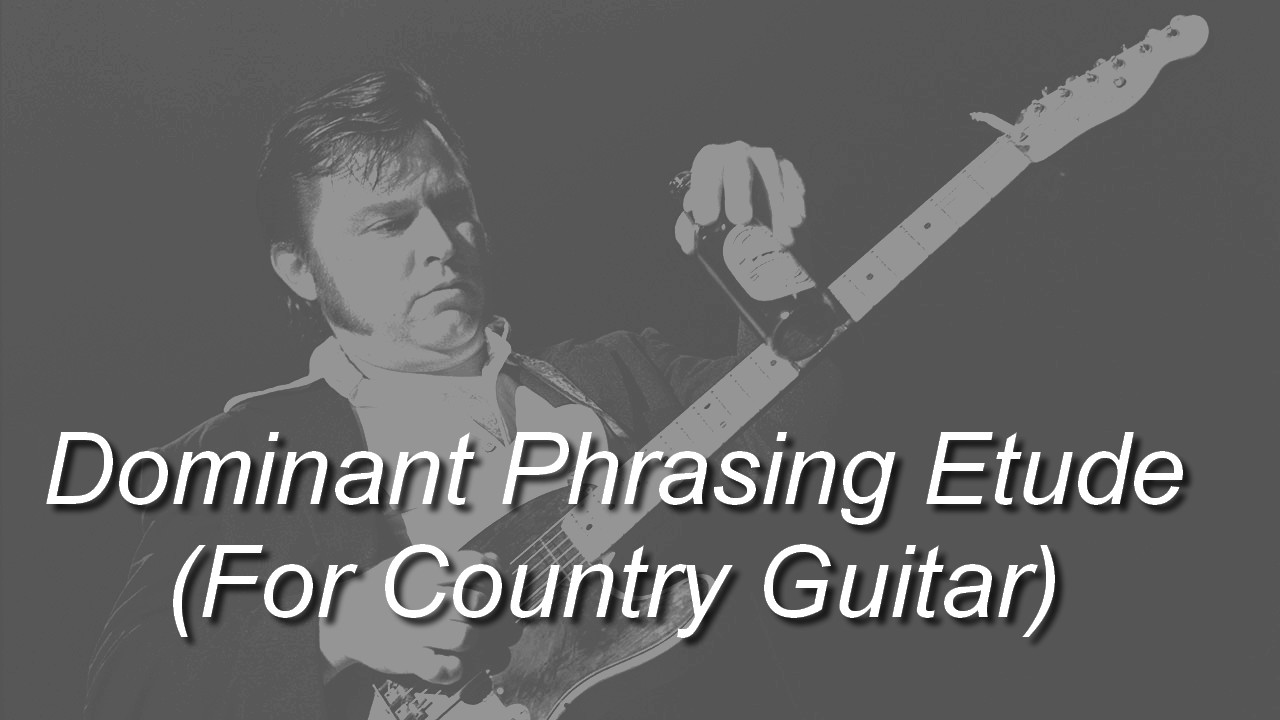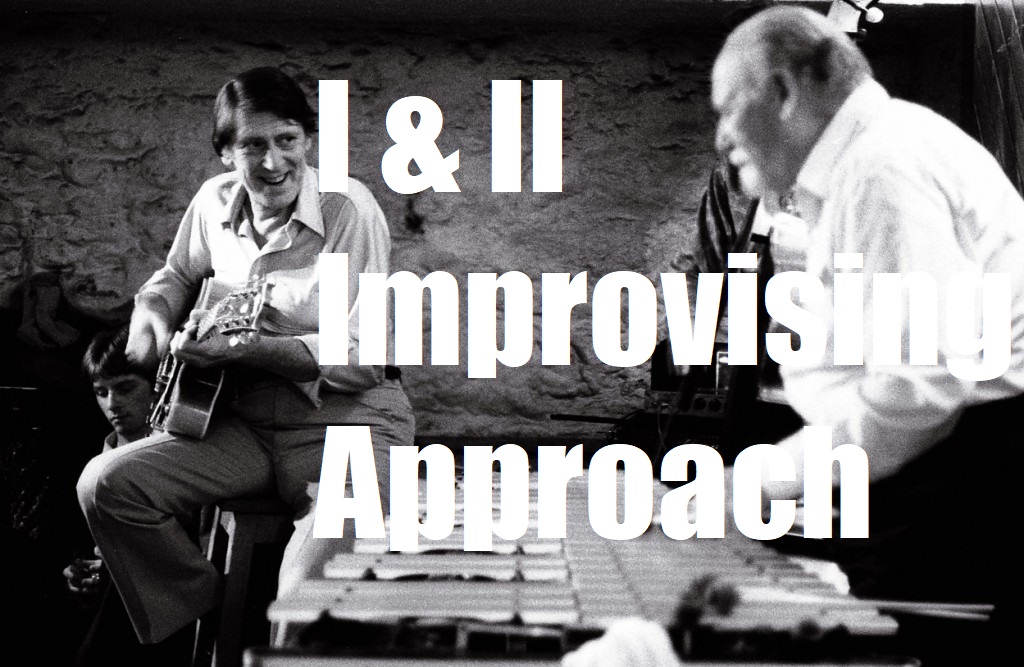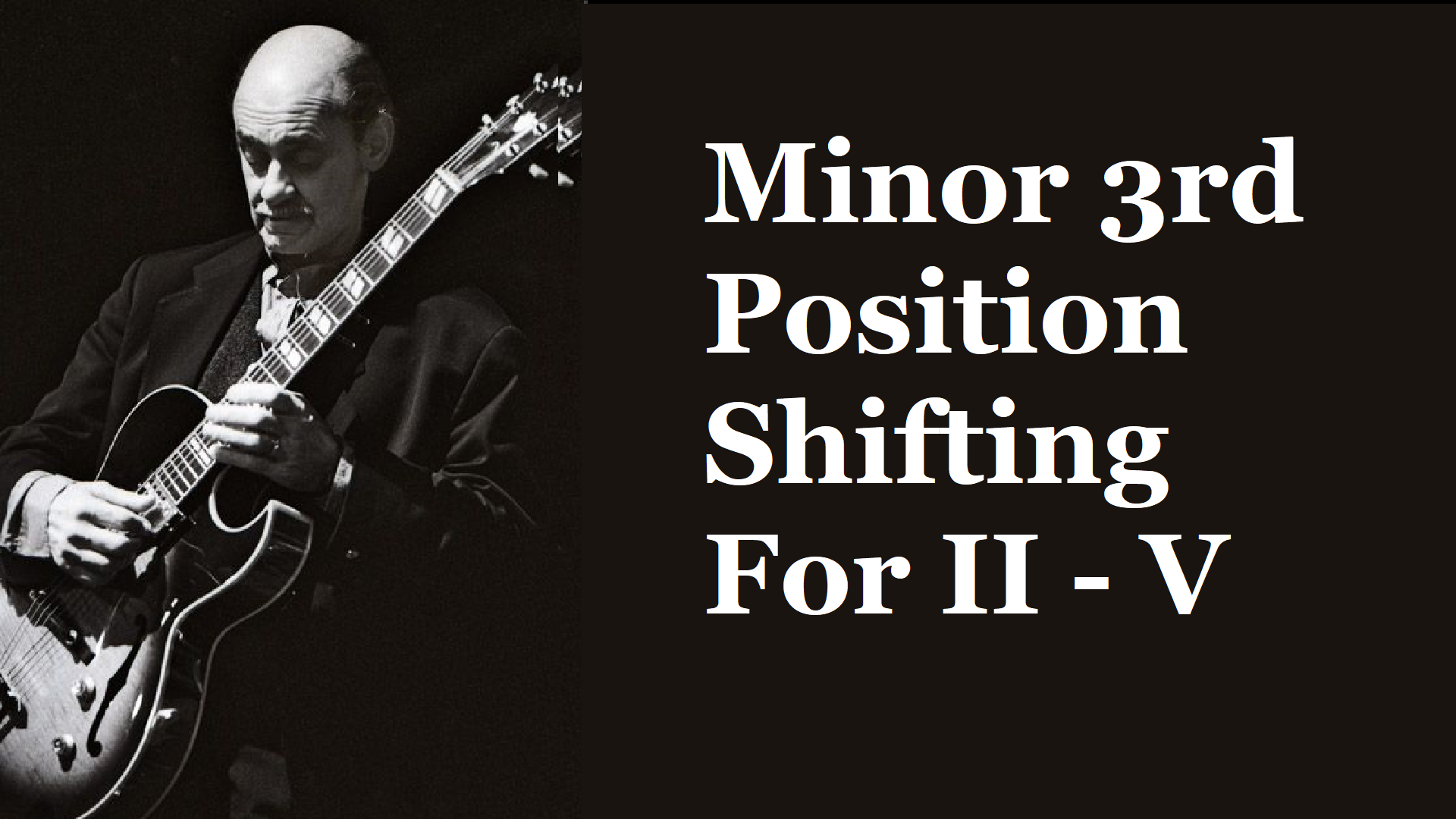
Now that I have explained the main principles of my neck visualization approach we will see how we can add other intervals to build all sorts of material.
Let start with the first position of the last lesson:
- Behind the root, root of 6th string (G shape)

I have added the other natural intervals of the position in gray. Note that I haven’t written the altered intervals but with a little practice, it will be easy to deduct them. Here are three steps to memorize these intervals:
- Learn the major/minor 3 notes graphic by heart
- Learn the other natural intervals
- Deduct other altered intervals. Per example: b7th is a half step lower than the major 7th …etc.
I know this is more easy to say than to achieve, but implementing this method will have a very positive effect on your neck visualization, especially in the long run. It will also have great benefit for ear training. By constantly knowing the notes you are playing, your ear will progressively recognize notes in their musical context.
Here are the other positions
- Ahead of the root (Root on 6th string)

- Behind the root (Root on 5th string)

- Ahead of the root (Root on 5th string)

It would be a great idea to try to construct arpeggios and lines from the first position (behind the root ‘root on the 6th string) on those positions.
So now we should have a basis that allows us to deduct every intervals all over the neck!

I know this isn’t as easy as what I just said but now you have a very solid foundation to start visualizing your neck based on intervals and note ‘roles’, instead of relying on scale shapes which I think is a very limiting visualization approach. With enough work on interval visualization, you should be able to construct any desired scale on the moment without having to think of complicated shapes.
In the next part of this lesson we will check how we can take advantage of our intervals knowledge to build and transpose musical material and ideas.







